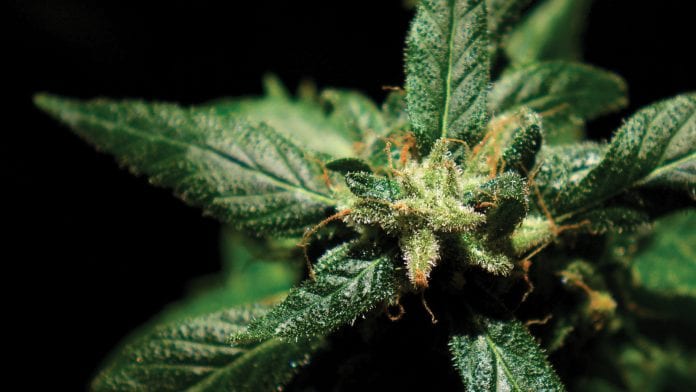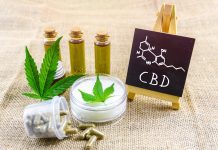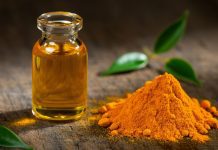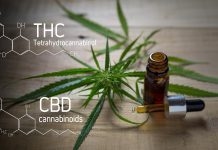
An examination of how medical cannabis could be used to combat the abuse of various substances and addiction disorders.
Humans enjoy sampling a variety of extreme stimuli. These behaviours may be risky (such as persistent gambling, drinking or smoking), repetitive to the exclusion of normal interpersonal interactions (such as gaming), unhealthy (such as overeating), or resulting in a sense of euphoria or a ‘high.’ Some of these behaviours can become excessive and psychological or physical cravings lead to the behaviour overtaking the usual activities of daily living. Where physical cravings are involved, the serious nature of substance use disorder (SUD) has come into focus as more than 130 people in the United States die every day after overdosing on opioids (CDC, 2018). Clearly, effective treatment strategies are in short supply.
The endocannabinoid system may suppress addictive urges
The body’s endocannabinoid system (ECS) consists of receptors which mediate a variety of functions ranging from cognition, memory, mood, appetite and sensory responses (Chye, 2019). The ECS’s role in reward signalling may influence repetitive behaviour. Cannabidiol (CBD) is a phytocannabinoid found in cannabis plants but not made in the human body.
Nevertheless, it can interact with ECS receptors (CB1R in particular) to provide a therapeutic strategy for addictions. CBD is ‘non-rewarding’ and acts to mediate responses in a number of receptor systems including the opioid, serotonergic, and endocannabinoid systems (Chye, 2019). With cannabinoids acting directly on ECS receptors, it is clear that medical cannabis could have potential success as a substance abuse treatment option.
Cannabis for the treatment of substance use disorder
Drug addiction, now known as substance use disorder (SUD), is characterised by repeated use of a drug or substance leading to clinically significant distress. Over time, this becomes a health threat to the affected individual, as well as to their community (Chye, 2019). The most common substances involved in SUDs include both prescription and illicit opioids, commercially available nicotine and alcohol, and illicit cocaine and methamphetamine (APA, 2013). Available treatment options include behavioural counselling, medication, medical devices and pharmaceuticals (there are three FDA-approved options) to address both the physical and psychological aspects of drug abuse, but they are clearly not effective or available enough. Cannabinoids offer a possible additional option.
Cannabis as an alternative to opioid use
Opioids are typically used for pain reduction, but have the additional effects of drowsiness, mental confusion, euphoria, nausea and constipation. This class of drugs includes prescription narcotic pain relievers, synthetic opioids, and heroin (American Psychiatric Association, 2018). In 2017, the US National Institute of Health (NIH) published a report in the New England Journal of Medicine that acknowledged the role of cannabis as a short to intermediate term alternative for the treatment of chronic pain rather than opioids.
A frequent path to SUD starts with an opioid prescription for pain relief from an injury or procedure. Unfortunately, it can take as little as 4 weeks to develop physical opioid dependence (American Psychiatric Association, 2018). The high levels of positive reinforcement in the brain that opioids can elicit increases the likelihood that an individual will continue to use the drug despite the negative consequences that might result (American Psychiatric Association, 2018).
Cannabis to reduce opioid effects in animals
Opioids influence the reward system in the brain, a logical target for treatment strategies. Animal studies indicate that CBD inhibits some of these brain reward mechanisms responsible for the opioid reinforcing properties (Katsidoni et al., 2012; Hurd et al., 2019, Markos et al., 2018; Ren et al., 2009). Research has shown that CBD actually impaired the reconsolidation of the preferences for certain conditioned environments or stimuli by reducing the reward associated with the drug (deCarvalho & Takahashi, 2017), and persisted for as long as two weeks after administration (Ren et al., 2009). The suggestion of a potential long-lasting benefit of CBD use on opioid use disorder is exciting.
SUD in the face of continued pain presents a separate problem, and the role for THC (a pain treatment alternative) in addition to CBD is obvious. Male rats who were trained to self-administer oxycodone were more likely to self-administer less frequently after they had been exposed to THC. Additional data showed that rats given a THC/oxycodone combination were slower to feel pain in a sensory test compared to rats given either drug alone (Nguyen et al., 2019). These findings suggested that THC and oxycodone may have additive effects, with THC potentially enhancing the therapeutic efficacy of opioids, and therefore perhaps reducing the use of opioids over time.
The painful and unpleasant physical symptoms of withdrawal can drive a person who is addicted to opioids to use the drug again. THC has been shown to reduce the signs of quasi-morphine withdrawal syndrome in rats, and other phytocannabinoids like cannabinol (CBN) might also be useful in this setting (Chesher & Jackson, 1985). Therefore, full spectrum cannabis could prove beneficial for lessening withdrawal symptoms that lead to relapse.
Clinical evidence for cannabis to reduce opioid use
A Columbia Care analysis of its peripheral neuropathy patients showed that 62% of those on narcotics when they began regularly using a proprietary, formulated, pharmaceutical-quality medical cannabis product (TheraCeed™, EleCeed™ and ClaraCeed™) stabilised, reduced or eliminated their narcotic usage over a nine-month observation period. This data was the basis for a US National Institute of Health (NIH)-awarded R21 grant to Columbia University/New York Psychiatric Institute to continue the same data collection over a longer period of time in an expanded data set. The study is currently ongoing.
Cannabis for the use of nicotine use disorder
Several studies with cannabis have been conducted in various smoker populations. ‘Hopeful quitters’ who were given a CBD inhaler to use whenever they felt the urge to smoke significantly reduced the number of cigarettes smoked by about 40%, compared to subjects given a placebo inhaler, who showed no difference (Morgan et al., 2013). Those effects were even maintained at follow up, showing the potential that CBD could have as a treatment for nicotine addiction.
In a second series of smokers not seeking to quit, 800mg oral CBD capsules reduced the pleasantness of cigarette cues (such as images of smoking) after overnight cigarette abstinence compared to placebo but did not influence feelings of craving or withdrawal (Hindocha et al., 2018). More research is needed in this area in order to better conclude how best to study and use CBD on those who are nicotine dependent. Additionally, the habit of inhaling itself, whether a cannabinoid or nicotine, as well as the patient intention, need to be factored into these studies.
Cannabis for the treatment of alcohol use disorders
The effects of alcohol dependence have been well known for many decades, and the financial and physical toll of patients with neurological degeneration, liver failure and cirrhosis is heavy. Alcohol use disorders encompass several clinical criteria, including alcohol tolerance, withdrawal symptoms, cravings and other consequences that medically or psychosocially interfere with daily life (De Ternay et al., 2019). Subjects frequently resolve to not drink again, but the physical symptoms of withdrawal (as with opioid dependence) may be overwhelming.
Studies in mice have shown that CBD administration reduced symptoms of alcohol withdrawal as well as total ethanol intake (Viudez-Martínez et al, 2018). Research has also demonstrated that CBD administration to rats using alcohol self-administration decreased drug seeking behaviour, with less sedation and more normal motivated behaviour (Gonzalez-Cuevas et al., 2018).
The literature also supports the hypothesis that CBD may reduce alcohol consumption and motivation better than currently available SUD pharmaceuticals approved by the FDA (Viudez-Martínez et al., 2018). For instance, the combination of low doses of CBD together with naltrexone, a medication commonly used to prevent relapses into alcohol or drug abuse, were more effective than CBD or naltrexone alone at reducing alcohol consumption and motivation to consume alcohol in mice (Viudez-Martínez et al., 2018).
Exposure to CBD together with THC in mice exposed to ethanol concurrently led to decreased hyperactivity in response to later ethanol exposure. These effects were not seen in the mice treated with CBD alone, making the combination of cannabinoids another important treatment method to consider when expanding this research in humans (Filev et al., 2017).
Cannabis for the treatment of cocaine use or addiction
Cocaine is a powerfully addictive illegal stimulant made from the leaves of the coca plant. Even short-term cocaine use may lead to several negative health outcomes, in addition to the behaviour risks exhibited by users. There are no FDA-approved medications to treat cocaine addiction at this time (National Institute on Drug Abuse, 2019.)
To date, research looking for signs of cannabinoid utility in negating cocaine addiction are mixed. One study concluded that acute treatment with CBD had minimal effects on a rat model of cocaine intake and relapse (Mahmud et al., 2017). Another demonstrated that repeated CBD treatment reduced anxiety and cocaine intake in mice (Lujan et al., 2018).
Alarmingly however, adolescent male rats exposed to THC reinforced the effects of cocaine and enhanced sensitivity to cocaine (Friedman et al., 2019). Clearly, additional research studies are necessary in order to fully understand how medical cannabis may fit in to the landscape of cocaine usage and addiction treatment.
Cannabis for the treatment of methamphetamine use
Methamphetamine is a highly addictive substance with high relapse rates. A strong connection between sleep impairment and methamphetamine relapse led researchers to investigate CBD as a potential treatment for sleep derangement, and reduced relapse. Findings demonstrated that CBD exposure reduced the likelihood that rats would relapse, even in conditions of stress (Karimi-Haghighi et al., 2018), as well as reduced self-administration in rats.
Together, these findings suggest that CBD is worth investigating further as an agent that could be successfully used to reduce methamphetamine dependence in humans (Hay et al., 2018).
Columbia Care is uniquely suited to build on the existing body of research
There is clear support for cannabinoids in treating SUDs by alleviating symptoms of withdrawal, providing alternative pain control and helping restore normal sleep patterns. The animal research illustrating the potential of medical cannabis products to treat addiction to opioids, nicotine, alcohol, cocaine and methamphetamine must be expanded into clinical settings. However, the encouraging work to date is a good basis to conduct the required clinical studies to give patients a new, desperately needed treatment option.
US government regulations currently limit controlled clinical research using medical cannabis products. Columbia Care’s strong portfolio of observational research studies provides valuable insight on the benefit of medical cannabis into a wide range of conditions, including rheumatoid arthritis, epilepsy and opioid addiction. A groundbreaking study with Stanford University will also identify genetic factors affecting an individual’s response to medical cannabis.
Columbia Care recently announced its ‘100,000,000 Ways to Break the Opioid Crisis’ initiative to test whether precisely formulated medical cannabis is a safe and effective alternative to narcotics for pain. Centred in New York City, in collaboration with Montefiore Medical Centre and Albert Einstein College of Medicine, the program will expand throughout New York State and to other states where Columbia Care’s formulated medical cannabis products are legally available. These unit dosable, formulated products (TheraCeed, a high THC, low CBD product with a 20:1 ratio, EleCeed, an equal THC:CBD product, ClaraCeed, a low THC, high CBD product with a 1:20 ratio, and BeneCeed, a CBD product) are manufactured to strict standards and allow Columbia Care to partner with respected academic researchers to use these quality controlled products for research studies.
This is evidenced not only by the Columbia University NIH grant but also the publication of a research study conducted by scientists at New York University (NYU) using Columbia Care’s pharmaceutical quality products in a peer-reviewed journal in March 2019. To be able to treat all conditions for which medical cannabis is indicated, these products come in a variety of medicinal formats, including vapourisation oil, hard-pressed tablets, sublingual tinctures, topical lotion and vaginal and anal suppositories.
Conclusion
Preliminary evidence suggests that medical cannabis could be an effective option for treating SUDs. As the only company conducting US federally funded scientific research using standardised products, Columbia Care is the clear leader to determine a role for medical cannabis in the opioid crisis. With the Columbia University/New York Psychiatric Institute collaboration on opioid usage, and the 100,000,000 Ways to Break the Opioid Crisis initiative, Columbia Care has committed to provide its pharmaceutical-quality medical cannabis as a safe alternative to combat addiction and save lives. Beyond this opioid focused initiative, Columbia Care believes its products truly have the potential to help the millions of people struggling with many different SUDs.
References
- American Psychiatric Association (2013). DSM 5.
- American Psychiatric Association. (2018).“Opioid Use Disorder.”
- CDC/NCHS, National Vital Statistics System, Mortality. CDC WONDER, Atlanta, GA: US Department of Health and Human Services, CDC; 2018.
- Chesher GB, Jackson DM. (1985). The quasi-morphine withdrawal syndrome: effect of cannabinol, cannabidiol and tetrahydrocannabinol. Pharmacology Biochemistry and Behaviour, 23, 13–15.
- Chye Y, Christensen E, Solowij N and Yücel M (2019) The Endocannabinoid System and Cannabidiol’s Promise for the Treatment of Substance Use Disorder. Front. Psychiatry 10:63.
- De Carvalho, C.R. & Takahashi, R.N. (2017). Cannabidiol disrupts the reconsolidation of contextual drug-associated memories in Wistar rats. Addiction Biology, 22(3), 742-751.
- De Ternay J, Naassila M, Nourredine M, Louvet A, Bailly F, Sescousse G, Maurage P, Cottencin O, Carrieri P.M., Rolland B. (2019). “Therapeutic Prospects of Cannabidiol for Alcohol Use Disorder and Alcohol-Related Damages on the Liver and the Brain.” Front. Pharmacol.
- Filev R, Engelke DS, Da Silveira DX, Mello LE, Santos-Junior JG. (2017.) “THC inhibits the expression of ethanol-induced locomotor sensitization in mice.” Alcohol.;65:31-35.
- Friedman AL, Meurice C, Jutkiewicz EM. (2019). “Effects of adolescent Δ9-tetrahydrocannabinol exposure on the behavioral effects of cocaine in adult Sprague-Dawley rats.” Exp Clin Psychopharmacol.; 4:326-337.
- Gonzalez-Cuevas G, Martin-Fardon R, Kerr TM, Stouffer DG, Parsons LH, Hammell DC, Banks SL, Stinchcomb AL, Weiss F. (2018). “Unique treatment potential of cannabidiol for the prevention of relapse to drug use: preclinical proof of principle.” Neuropsychopharmacology; 43(10):2036-2045.
- Hay GL, Baracz SJ, Everett NA, Roberts J, Costa PA, Arnold JC, McGregor IS, Cornish JL. (2018). “Cannabidiol treatment reduces the motivation to self-administer methamphetamine and methamphetamine-primed relapse in rats.” J Psychopharmacol.; 32(12):1369-1378.
- Hindocha, C., Freeman, T.P., Grabski, M., Stroud, J.B., Crudgington, H., Davies, A.C., Das, R.K., Lawn, W., Morgan, C.J.A. & Curran, H.V. (2018). Cannabidiol reverses attentional bias to cigarette cues in a human experimental model of tobacco withdrawal. Addiction, 113(9), 1696-1705.
- Hurd, Y.L., Spriggs, S., Alishayev, J., Winkel, G., Gurgov, K., Kudrich, C., Oprescu, A.M. & Salsitz, E. (2019). Cannabidiol for the Reduction of Cue-Induced Craving and Anxiety in Drug-Abstinent Individuals With Heroin Use Disorder: A Double-Blind Randomized Placebo-Controlled Trial. American Journal of Psychiatry.
- Karimi-Haghighi S, Haghparast A. (2018). “Cannabidiol inhibits priming-induced reinstatement of methamphetamine in REM sleep deprived rats.” Prog Neuropsychopharmacol Biol Psychiatry; 82:307-313.
- Katsidoni, V., Anagnostou, I. & Panagis, G. (2012). Cannabidiol inhibits the reward‐facilitating effect of morphine: involvement of 5‐HT1A receptors in the dorsal raphe nucleus, Addiction Biology, 18(2), 286-296.
- Lujan MA, Castro-Zavala A, Alegre-Zurano L, Valverde O. (2018). “Repeated Cannabidiol treatment reduces cocaine intake and modulates neural proliferation and CB1R expression in the mouse hippocampus.” Neuropharmacology; 143:163-175.
- Mahmud A, Gallant S, Sedki F, D’Cunha T, Shalev U. (2017). “Effects of an acute cannabidiol treatment on cocaine self-administration and cue-induced cocaine seeking in male rats.” J Psychopharmacol.; 1:96-104.
- Markos, J.R., Harris, H.M., Gul, W., ElSohly, M.A. & Sufka, K.J. (2018). Effects of Cannabidiol on Morphine Conditioned Place Preference in Mice. Planta Medica, 84(4), 221-224.
- Morgan, C.J., Das, R.K., Joye, A., Curran, H.V. & Kamboj, S.K. (2013). Cannabidiol reduces cigarette consumption in tobacco smokers: preliminary findings. Addictive Behavior, 38(9), 2433-6.
- National Institute on Drug Abuse. 2019. “Commonly Abused Drugs Charts.”
- Nguyen, J.D., Grant, Y., Creehan, K.M., Hwang, C.S., Vandewater, S.A., Janda, K.D., Cole, M. & Taffe, M.A. (2019). Δ9-tetrahydrocannabinol attenuates oxycodone self-administration under extended access conditions. Neuropharmacology, 151, 127-135.
- Ren, Y., Whittard, J., Higuera-Matas, A., Morris, C.V. & Hurd, Y.L. (2009). Cannabidiol, a nonpsychotropic component of cannabis, inhibits cue-induced heroin seeking and normalizes discrete mesolimbic neuronal disturbances. Journal of Neruoscience, 29(47), 14764-9.
- Viudez-Martínez A, García-Gutiérrez MS, Navarrón CM, Morales-Calero MI, Navarrete F, Torres-Suárez AI, Manzanares J. (2018). “Cannabidiol reduces ethanol consumption, motivation and relapse in mice.” Addict Biol.; 1:154-164.
Columbia Care, Inc.
info@col-care.com
https://col-care.com/
This article will appear in Health Europa Quarterly Issue 11, which is available to read now.









